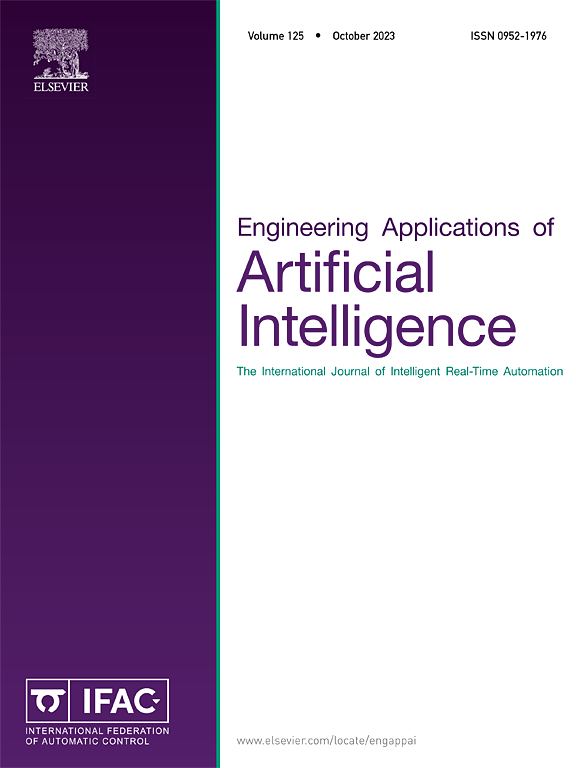Incorporating prior knowledge of collision risk into deep learning networks for ship trajectory prediction in the maritime Internet of Things industry
IF 7.5
2区 计算机科学
Q1 AUTOMATION & CONTROL SYSTEMS
Engineering Applications of Artificial Intelligence
Pub Date : 2025-02-20
DOI:10.1016/j.engappai.2025.110311
引用次数: 0
Abstract
Artificial intelligence (AI) has played a key role in advancing autonomous navigation for unmanned ships, where ship trajectory prediction is crucial for ensuring maritime safety. As the shipping industry grows and the number of ships increases, especially with autonomous ships operating in complex environments, collision risks have become a major concern. Accurate trajectory prediction, supported by advanced AI techniques, is crucial for the safe operation of these ships. While current models predict ship trajectories with high precision using Automatic Identification System (AIS) data, they often fail to incorporate prior knowledge of collision risks and struggle to model ship interactions that could lead to collisions. To overcome these limitations, the DGCN-Transformer (Dynamic Graph Convolution Network-Transformer) model is proposed. This model enhances the accuracy and reliability of ship trajectory predictions by incorporating collision risk modeling into the prediction framework. It uses the Quaternion Ship Domain (QSD) to model potential collision scenarios, integrating an advanced understanding of ships' spatial and kinematic properties. The model integrates QSD-based prior knowledge into an advanced Graph Convolutional Network (GCN) for spatial modeling, while the Transformer component captures and analyzes temporal features, overcoming the limitations of traditional Long Short-Term Memory (LSTM) networks. Experiments with AIS data from Tianjin, Caofeidian, and Chengshanjiao ports demonstrate that the DGCN-Transformer model outperforms state-of-the-art models, significantly improving trajectory prediction accuracy. Specifically, at Tianjin Port, the DGCN-Transformer model reduces Final Displacement Error (FDE) by 36.1%, Maximum Displacement Error (MDE) by 15.4%, and Average Displacement Error (ADE) by 50% compared to the best baseline model, highlighting the model's effectiveness in enhancing the safety of autonomous ship navigation.
求助全文
约1分钟内获得全文
求助全文
来源期刊

Engineering Applications of Artificial Intelligence
工程技术-工程:电子与电气
CiteScore
9.60
自引率
10.00%
发文量
505
审稿时长
68 days
期刊介绍:
Artificial Intelligence (AI) is pivotal in driving the fourth industrial revolution, witnessing remarkable advancements across various machine learning methodologies. AI techniques have become indispensable tools for practicing engineers, enabling them to tackle previously insurmountable challenges. Engineering Applications of Artificial Intelligence serves as a global platform for the swift dissemination of research elucidating the practical application of AI methods across all engineering disciplines. Submitted papers are expected to present novel aspects of AI utilized in real-world engineering applications, validated using publicly available datasets to ensure the replicability of research outcomes. Join us in exploring the transformative potential of AI in engineering.
 求助内容:
求助内容: 应助结果提醒方式:
应助结果提醒方式:


